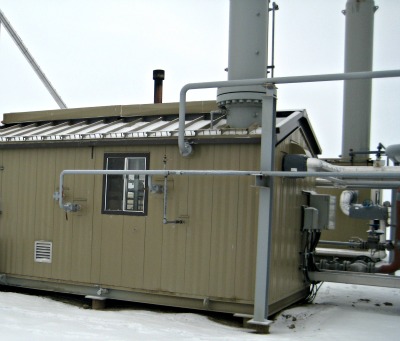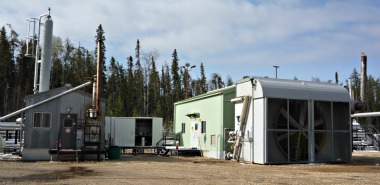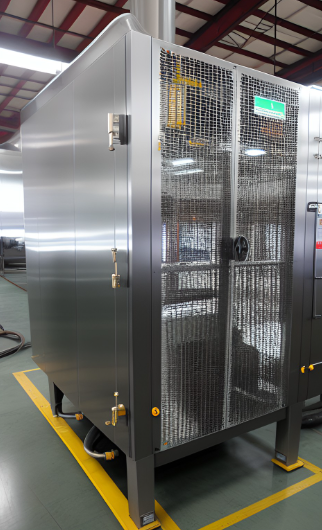- Air Homepage
- Air Quality Testing
- Benzene Emissions
The AER Directive 39: Controlling Benzene Emissions for a Sustainable Future
What's the deal with Directive 39 of the Alberta Energy Regulator (AER)? How does it help us control benzene emissions? There are a lot of chemicals released into the environment by the energy industry.
The Benzene Blitz and Directive 39 - The cancer-causing agent, benzene, lurks in oilfield vapors and AER Directive 39 implements limits, audits, and tech tweaks to reclaim the surroundings. Can it help with your activity?
Alberta Energy Regulator (AER) Directive 39 controls how the energy sector deals with emissions. We look at how it protects health and the environment. Benzene is a dangerous carcinogen in the energy sector. Glycol dehydrators are the main source of emissions.
In this article, we explore benzene's risks and AER's regulatory framework. Adapting to its stringent requirements, emphasizing safety and advanced technology, is valuable for professionals and businesses. Creating a cleaner, safer, and more sustainable energy future starts with Directive 39.
Benzene is one of the most controversial. What's the reason? Because this toxic substance (according to the Canadian Environmental Protection Act) leads to leukemia and various other cancer types, and no safe threshold level has been determined for benzene, although Alberta Ambient Air Quality Objectives have been established for some time.
Very dangerous. Benzene is toxic and carcinogenic, so it's bad for your health and the environment. High levels of benzene in the atmosphere can cause headaches, dizziness, nausea, and long-term exposure can increase the risk of cancer.
It can also contribute to ground-level ozone and smog, which can further harm human health and the environment. Vehicle emissions, industrial processes, and natural sources like wildfires release this volatile organic compound (VOC) into the atmosphere.
Benzene levels in the atmosphere need to be monitored and regulated to protect human health and the environment. By reducing emissions from vehicles and industrial processes and enforcing air quality standards and regulations, we can do this.
The Invisible Threat of Benzene
Here's Alberta AER Directive 39, entitled Revised Program to Reduce Benzene Emissions from Glycol Dehydrators. -http://www.aer.ca/documents/directives/Directive039.pdf. It aims to minimize people's exposure to this chemical to control these consequences. Oil and gasoline contain benzene, which has a sweet, light aroma, takes the form of a colorless liquid, and ignites easily.
The petroleum industry releases benzene in a lot of ways. Flares, glycol dehydrators, storage tanks, and stacks are all on the list. In glycol dehydrators, benzene gets concentrated during the dehydration process.
How are people exposed to benzene?
Paint fumes, detergent fumes, gasoline fumes, and other petroleum-derived products contain benzene. Pure benzene, C6H6, not petroleum ether, a mixture of liquid hydrocarbons (including benzene) commonly called petroleum benzene.
However, consumer product regulations have mitigated benzene levels in many of these products. People who smoke inhale a lot more benzene than the average person.
Benzene in drinking water is a concern in the US, so the EPA set a maximum concentration of 5 ppb and designated airborne benzene as a hazardous air pollutant. Occupational Safety and Health Administration (OSHA) set a short-term exposure level of 5 ppm for 15 minutes for full-time workers. NIOSH (National Institute for Occupational Safety and Health) says 500 ppm is "immediately dangerous".
Even low doses, even 50 ppm, can slow down the central nervous system and make you sleepy, give you headaches, and cause drunkenness-like symptoms. Chronic exposure poses a different set of problems. If it gets in direct contact with the skin, it can slow blood flow.
When workers encounter multiple chemicals, like alcohols and BTEX (benzene, toluene, ethyl-benzene, and xylenes), problems can compound.
How does AER Directive 39 provide guidance for benzene emissions?
In industrial plants and facilities, leaks are to be stopped, process components are to be used that control and optimize fluid flow, and safe work practices are to be followed. The Best Management Practices for Control of Benzene Emissions from Glycol Dehydrators - http://documents.mx/documents/control-of-benzene-emissions-from-glycol-dehydrators.html
The Canadian Association of Petroleum Producers (CAPP) explains how technical decisions about benzene-containing processes should be made. PPE (personal protective equipment) should be used correctly by employees, and monitoring equipment should be used to keep them aware of their surroundings.
Site emissions must be within benzene emission limits, given in mass per year, according to the age of their equipment. This section of AER Directive 39 is pretty detailed and must be followed exactly. Each unit's benzene emissions need to be calculated using a Dehydrator Engineering and Operations Sheet (DEOS).
During plant and unit operations, this worksheet needs frequent attention. The Technical Advisory Team (the Benzene TAT) also requires plants to submit a Dehydrator Benzene Inventory List every year. As outlined in AER Directive 019: AER Compliance Assurance-Enforcement, the AER can take action against non-compliant facilities.
Calvin Consulting Group Ltd. specializes in energy-industry atmospheric emissions regulations. Talents in these areas are used to handle government requirements:
AER Directive 39 - Benzene Emissions
AER Directive 60 - Flaring and Incineration
AER Directive 56 - Government Applications
Air dispersion modelling - To support all interactions with the government.
Please email Barry J. Lough at Calvin Consulting Group Ltd. this address...
...for dispersion modelling or help with any air quality questions you might have. Thank you.
More detail about Directive 39
Alberta Directive 39 was last issued on February 1, 2019 by the Alberta Energy Regulator (AER). The Oil Sands Information and Monitoring Directive outlines requirements for monitoring and reporting oil sands development activities in Alberta. Oil sands mining, in situ operations, and associated processing and transportation are covered by the directive.
Companies have to collect and report data on air quality, water quality, wildlife and biodiversity, and other environmental factors. Companies must also provide information to stakeholders, like Indigenous groups and local communities, about their operations.
The overall goal of Directive 39 is to ensure oil sands development in Alberta is environmentally responsible and sustainable, with a focus on transparency and stakeholder engagement.
Your air quality is at risk due to benzene emissions from glycol dehydrators
We need to watch and reduce environmental toxic releases.
The Alberta AER Directive 39 gives us helpful regulations and guidance for reducing emissions of benzene .
Do you have concerns about air pollution in your area??
Perhaps modelling air pollution will provide the answers to your question.
That is what I do on a full-time basis. Find out if it is necessary for your project.
Have your Say...
on the StuffintheAir facebook page
Other topics listed in these guides:
The Stuff-in-the-Air Site Map
And,
Thank you to my research and writing assistants, ChatGPT and WordTune, as well as Wombo and others for the images.
OpenAI's large-scale language generation model (and others provided by Google and Meta), helped generate this text. As soon as draft language is generated, the author reviews, edits, and revises it to their own liking and is responsible for the content.






New! Comments
Do you like what you see here? Please let us know in the box below.